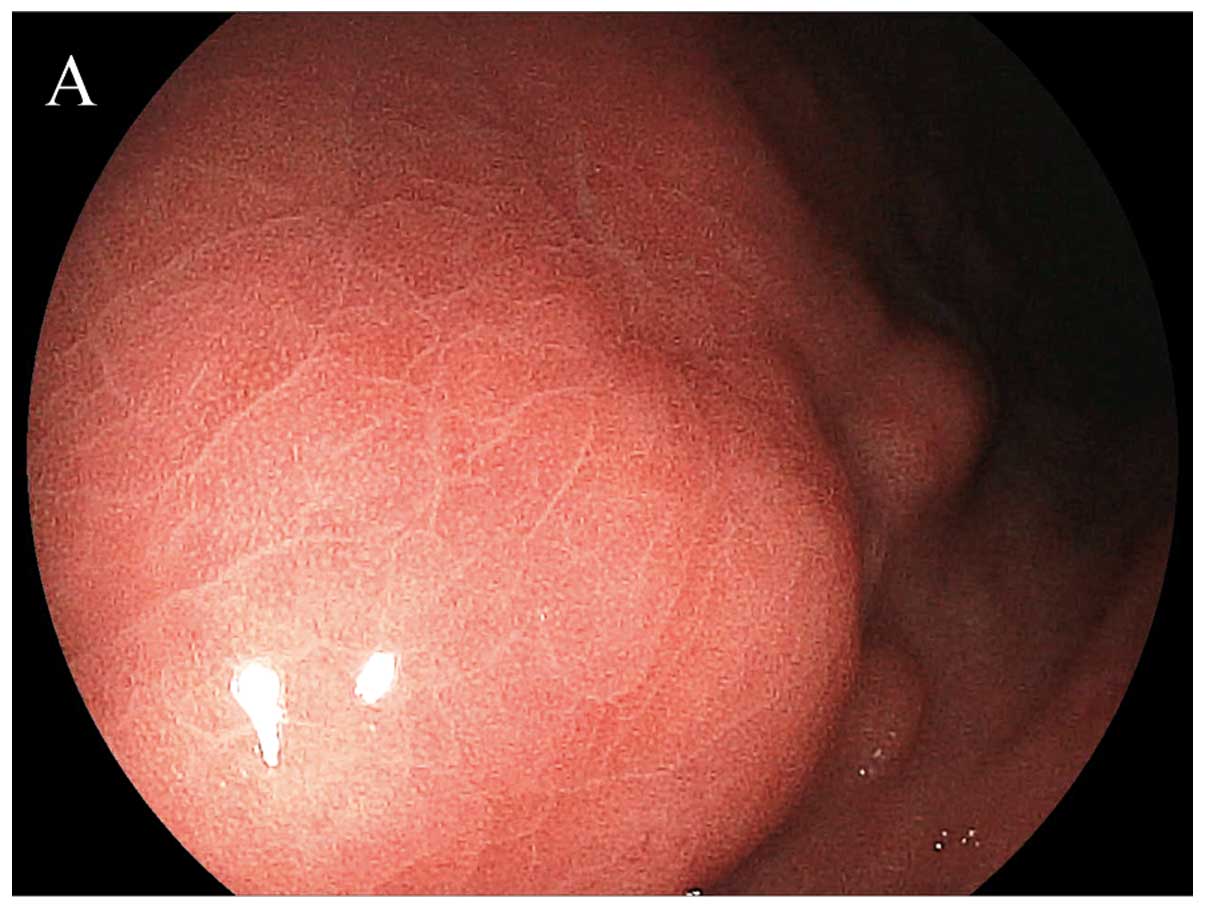|
1.
|
Marshall B and Warren JR: Unidentified
curved bacilli in the stomach of patients with gastritis and peptic
ulceration. Lancet. 1:1311–1315. 1984. View Article : Google Scholar : PubMed/NCBI
|
|
2.
|
NIH consensus conference. Helicobacter
pylori in peptic ulcer disease. NIH consensus development panel
on Helicobacter pylori in peptic ulcer disease. JAMA.
272:65–69. 1994.
|
|
3.
|
Uemura N, Okamoto S, Yamamoto S, et al:
Helicobacter pylori infection and the development of gastric
cancer. N Engl J Med. 345:784–789. 2001. View Article : Google Scholar
|
|
4.
|
Parsonnet J, Friedman GD, Vandersteen DP,
et al: Helicobacter pylori infection and the risk of gastric
carcinoma. N Engl J Med. 325:1127–1131. 1991. View Article : Google Scholar
|
|
5.
|
Huang JQ, Sridhar S, Chen Y and Hunt RH:
Meta-analysis of the relationship between Helicobacter
pylori seropositivity and gastric cancer. Gastroenterology.
114:1169–1179. 1998. View Article : Google Scholar : PubMed/NCBI
|
|
6.
|
Blaser MJ and Parsonnet J: Parasitism by
the ‘slow’ bacterium Helicobacter pylori leads to altered
gastric homeostasis and neoplasia. J Clin Invest. 94:4–8. 1994.
|
|
7.
|
Wotherspoon AC, Doglioni C, Diss TC, et
al: Regression of primary low-grade B-cell gastric lymphoma of
mucosa-associated lymphoid tissue type after eradication of
Helicobacter pylori. Lancet. 342:575–577. 1993. View Article : Google Scholar : PubMed/NCBI
|
|
8.
|
Mihara M, Haruma K, Kamada T, et al: The
role of endoscopic findings for the diagnosis of Helicobacter
pylori infection: evaluation in a country with high prevalence
of atrophic gastritis. Helicobacter. 4:40–48. 1999.PubMed/NCBI
|
|
9.
|
Satoh K, Kimura K, Taniguchi Y, et al:
Distribution of inflammation and atrophy in the stomach of
Helicobacter pylori-positive and -negative patients with
chronic gastritis. Am J Gastroenterol. 91:963–969. 1996.PubMed/NCBI
|
|
10.
|
Kawaguchi H, Haruma K, Komoto K, et al:
Helicobacter pylori infection is the major risk factor for
atrophic gastritis. Am J Gastroenterol. 91:959–962. 1996.
|
|
11.
|
Ishida M, Terano A, Tabuchi M, et al: The
comparison with rapid urease test and histological examination in
detection of Helicobacter-pylori. Gastroenterol Endosco.
40:773–778. 1998.
|
|
12.
|
Smith SB, Snow AN, Perry RL and Qasem SA:
Helicobacter pylori: to stain or not to stain? Am J Clin
Pathol. 137:733–838. 2012. View Article : Google Scholar
|
|
13.
|
Kimura K and Takemoto T: An endoscopic
recognition of the atrophic border and its significance in chronic
gastritis. Endoscopy. 3:87–97. 1969. View Article : Google Scholar
|
|
14.
|
Yagi K, Nakamura A and Sekine A:
Characteristic endoscopic and magnified endoscopic findings in the
normal stomach without Helicobacter pylori infection. J
Gastroenterol Hepatol. 17:39–45. 2002. View Article : Google Scholar : PubMed/NCBI
|
|
15.
|
Tanaka H, Ichikawa K, Fujimori T, et al:
Diagnostic validity of DNMT-1 and 3b immunoreactivity in
non-neoplastic epithelium of UC patients with and without
neoplasia. DJMS. 39:29–35. 2012.
|
|
16.
|
Laine L, Cohen H, Sloane R, et al:
Interobserver agreement and predictivevalue of endoscopic findings
for H. pylori and gastritis in normal volunteers.
Gastrointest Endosc. 42:420–423. 1995. View Article : Google Scholar : PubMed/NCBI
|
|
17.
|
Khakoo SI, Lobo AJ, Shepherd NA and
Wilkinson SP: Histological assessment of the Sydney classification
of endoscopic gastritis. Gut. 35:1172–1175. 1994. View Article : Google Scholar : PubMed/NCBI
|
|
18.
|
Bah A, Saraga E, Armstrong D, et al:
Endoscopic features of Helicobacter pylori-related
gastritis. Endoscopy. 27:593–596. 1995.
|
|
19.
|
Yagi K, Aruga Y, Nakamura A and Sekine A:
Regular arrangement of collecting venules (RAC): a characteristic
endoscopic feature of Helicobacter pylori-negative normal
stomach and its relationship with esophago-gastric adenocarcinoma.
J Gastroenterol. 40:443–452. 2005. View Article : Google Scholar : PubMed/NCBI
|
|
20.
|
Nakayama Y, Horiuchi A, Kumagai T, et al:
Discrimination of normal gastric mucosa from Helicobacter
pylori gastritis using standard endoscopes and a single
observation site: studies in children and young adults.
Helicobacter. 9:95–99. 2004.PubMed/NCBI
|
|
21.
|
Anagnostopoulos GK, Yao K, Kaye P, et al:
High-resolution magnification endoscopy can reliably identify
normal gastric mucosa, Helicobacter pylori-associated
gastritis, and gastric atrophy. Endoscopy. 39:202–207. 2007.
View Article : Google Scholar : PubMed/NCBI
|
|
22.
|
Machado RS, Viriato A, Kawakami E and
Patricio FR: The regular arrangement of collecting venules pattern
evaluated by standard endoscope and the absence of antrum
nodularity are highly indicative of Helicobacter pylori
uninfected gastric mucosa. Dig Liver Dis. 40:68–72. 2008.
View Article : Google Scholar : PubMed/NCBI
|
|
23.
|
Gonen C, Simsek I, Sarioglu S and Akpinar
H: Comparison of high resolution magnifying endoscopy and standard
videoendoscopy for the diagnosis of Helicobacter pylori
gastritis in routine clinical practice: a prospective study.
Helicobacter. 14:12–21. 2009. View Article : Google Scholar : PubMed/NCBI
|
|
24.
|
Alaboudy A, Elbahrawy A, Matsumoto S, et
al: Regular arrangement of collecting venules: Does patient age
affect its accuracy? World J Gastrointest Endosc. 3:118–123. 2011.
View Article : Google Scholar : PubMed/NCBI
|
|
25.
|
Okubo M, Tahara T, Shibata T, et al:
Usefulness of magnifying narrow-band imaging endoscopy in the
Helicobacter pylori-related chronic gastritis. Digestion.
83:161–166. 2011. View Article : Google Scholar : PubMed/NCBI
|
|
26.
|
Asaka M, Kato M, Takahashi S, et al:
Guidelines for the management of Helicobacter pylori
infection in Japan: 2009 revised edition. Helicobacter. 15:1–20.
2010.
|













